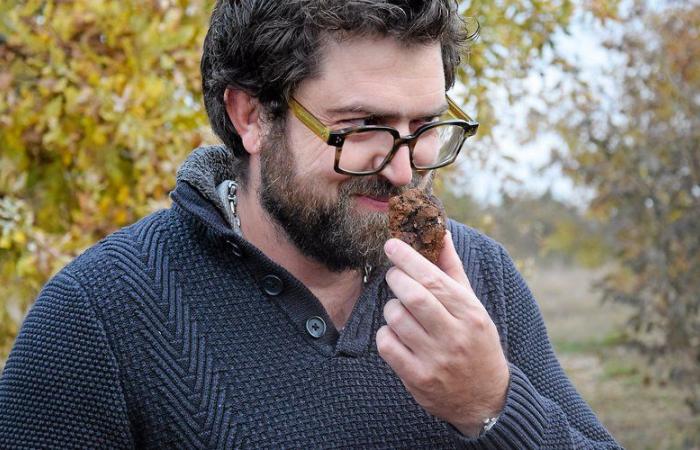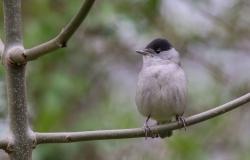the essential
The Chamber of Agriculture and the Aveyron truffle growing association organized a popularization day around this particularly coveted mushroom. In Aveyron, 1.5 tonnes come out of the ground each year and the potential to increase harvests is certain.
On the heights of Salles-la-Source, the trees, mainly oaks, are lined up in a straight line and carefully maintained. Yesterday, throughout a day organized by the Chamber of Agriculture and the Aveyron truffle growing association, around thirty people were able to visit two truffle farms and take advice from their operator.
For Arnaud Cueysse, the president of the association, this day was above all “ aims to popularize a culture which may seem complex but which is fascinating “. Many of the people who attended this day “ are farmers interested in being able to develop land that is difficult to exploit. This can be a source of diversification for some “. The price per kilo of truffles is regularly mentioned, particularly when the end-of-year holidays approach and demand is currently ten times greater than supply. “Prices are inevitably high, but if we wait a few months they decrease to between €600 and €800 per kilo,” explains Arnaud Cueysse. Only, “Truffle cultivation requires patience. It’s a long-term investment. It is estimated that it takes five to eight years for a tree to start producing its first mushrooms..
“The ancients knew where to find it in nature”
In Aveyron, most truffle growers are amateurs who have developed a passion for this precious mushroom which lives in symbiosis with the tree. A little more than 1.5 tonnes come out of the ground each year. In France, 80 tonnes are consumed each year. “ Our department has every potential to produce more, completes Arnaud Cueysse. We often think of the Lot, which produces around 3.5 tonnes per year. But this production tends to decrease over the years.
In addition, Aveyron has limestone soils where the truffle is particularly suited to these poor soils. And if the famous mushrooms still keep a few secrets (particularly with regard to their reproduction), the fact remains that their cultivation “has evolved a lot over the years. However, it requires weeding work, to aerate the land. And if its cultivation has been a little lost in our department, it had existed and in any case the ancients knew where to find it in nature”says Arnaud Cueysse.
Throughout the year, truffles can be produced: turber borchii “white truffle”, in spring: tuber æstivum in summer, tuber uncitanum in autumn and of course the famous “melanosporum”, the black truffle of 'winter.
France






